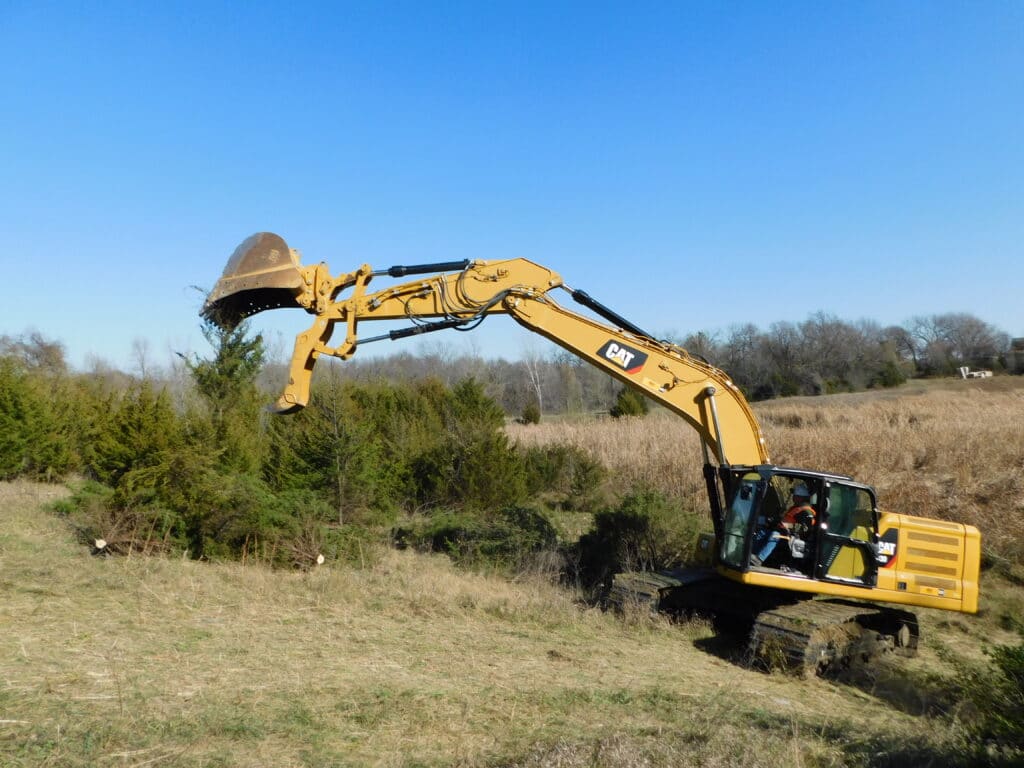In November 2020, Environmental Works, Inc. (EWI) used its specialized heavy equipment and expert operators to begin the comprehensive remediation and restoration of a stormwater detention pond that had sat untouched for almost 20 years back to its original state. The company spent several weeks removing non-native, invasive and nuisance vegetation and roots from the internal banks of the basin, as well as at its outfall. EWI also removed debris and sediment from the basin’s inlet, outfall, and outlet control structure, and installed erosion control measures such as straw wattles and mats and sowed a grass seed mixture of winter rye and fescue to all areas disturbed by remedial work.

EWI Field Supervisor Brian Bennett uses a 360 excavator to remove dozens of invasive eastern red cedars.
EWI will return to the work site, which is owned by and located behind two adjoining retail department stores in the Kansas City suburbs, in early spring 2021 to remove more debris and excess sediment from the bottom of the basin.
The basin originally came to EWI’s attention when the city in which the pond is located contacted the department stores about maintenance and inspection work on the basin. The department store that owns 60 percent of the pond reached out to EWI about remediation of the stormwater basin in order to get it certified with the city.
“Our client wants to get everything remediated correctly and in line with the city’s certification requirements,” said EWI Operations Manager Willie Vance. “We’re working with the other store’s client to make sure they do their part as well.”
EWI Field Supervisor Brian Bennett used a 360 excavator to remove the trees, shrubs, and nuisance woody vegetation, as well as their root systems, that had been allowed to grow up around the pond since 2001. Problem trees removed included dozens of invasive eastern red cedars, non-native and invasive Bradford pears, invasive locust trees, and nuisance willows.
The removal was done to prevent “catastrophic failure of the stormwater system and bring the pond back to as it was designed,” according to Vance.
Vance said that when he performed his initial site assessment at the end of October 2020, the site was so grown up that he could not get a visual on the pond.
“The big challenge was that large trees had grown up in the last 20 years,” he said. “When I first arrived, I couldn’t even see the tree line or the pond.”
Vance and Bennett look forward to continuing remediation work on the pond in the spring when they will remove the excess sediment and bring the pond back up to grade. As a final and ongoing step, EWI will perform preventative maintenance inspections on the pond once a month, monitoring and maintaining seeded areas to establish more than 80 percent vegetation coverage within the basin while preventing or otherwise controlling noxious weed growth.
Ideas on ways to improve the stormwater pond include a wetland area and native wildflower area, according to Vance.
“We’re working on how to have it function without maintenance repairs, so we have a sound asset and can save the pond, as well,” he said.




